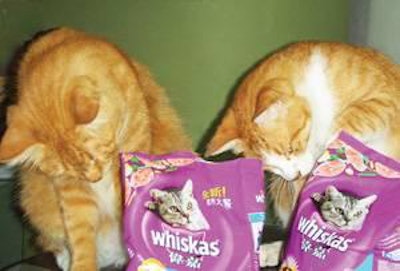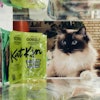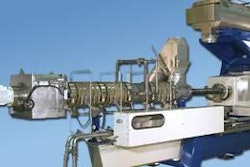
Despite his best efforts, Zhao Nan, a 23-year-old clerk who favors Samoyed, lost two dogs last year. His first Samoyed died of a disease. Then Zhao, who lives in Xi'an, China, lost the second dog when broken chicken bones in homemade petfood pierced the dog's guts. To make his third Samoyed strong and avoid any accidents, Zhao says he decided to buy prepared petfood.
Like Zhao, more pet owners in China have started purchasing commercial petfood rather than cooking for their pets at home as they become more concerned about their pets' health and seek convenience (see Figure 1). Half of the pet owners in Chinese urban areas buy petfood from retail outlets, and this number is even higher in major cities such as Chengdu, Beijing and Guangzhou.
But this does not mean Chinese pet owners will pick up whatever they find on the shelf. As interviews with several owners demonstrate, many have established their petfood purchasing standards according to price, package size and product reputation.
Although Chinese pets are starting their love affair with commercial petfood, most can only enjoy inexpensive products worth around 10 yuan (US$1.46) per kilogram. Price sensitivity is a major reason keeping Chinese pet owners away from high-end petfood, pet snacks and animal health products.
"Price always comes first," says Lin Shujie, 25, a journalist from Southeast China's Xiamen. "Of course I would like to buy the cheapest one as long as it does not make my cat sick."
Lin buys two packages of Whiskas--the only cat food brand available in Xiamen--each month for her 5-year-old cat. Since the retail price of Whiskas increased from 29 yuan (US$4.25) per 1.5 kilo to 37.5 yuan ($5.49) per 1.4 kilo this year, Lin started complaining about her "picky" cat. "If my cat showed a little bit of interest in fish or other kinds of homemade food, I would not buy commercial petfood any more," said Lin.
She is not alone. Several pet owners interviewed say they also care about petfood prices. As a result, they usually mix premium products--Royal Canin, for example--with value-priced petfood brands to provide enough nutrition for their pets at a lower cost.
Wei Chunlong, analyst at Shenzhen's Globrand, says over 60% of Chinese petfood buyers can only afford low-end products, and price concerns prevent most rural pet owners in China from buying commercial petfood.
Out of cost concerns and for convenience, large packages of petfood-weighing 10 to 20 kilos-are moving to the top of Chinese pet owners' shopping lists, Wei says.
Quan Tian, 24, an advertising agent from Chongqing, says she buys 16-kilogram packages of the Health Food brand from Life's Abundance for her Miniature Schnauzer. "I prefer to buy a large package because it is cheaper. Also, I can share it with other pet owners to lower my spending. But I cannot find anybody to share a small package," Quan says.
Larger packages are also favored by busy working pet owners. "I travel a lot and do not have time to buy food for my three cats frequently," says Guo Cheng, a photographer from Hainan province. "Thanks to large packages, I only need to go shopping once every two weeks. So, for me, bigger is better."
Although larger packages of petfood products are sold in supermarkets and pet markets, many people say they prefer to buy directly from petfood company websites to avoid counterfeited products. In addition, online stores usually offer delivery services, letting buyers avoid the trouble of carrying heavy goods home.
Reputation plays a key role in which foods Chinese pet owners seek for their pets. Petfood from well-known companies and with nice packaging can attract new buyers, but experienced pet owners pay more attention to product quality as well as users' reviews.
Huang Guoping, 49, who works at a Chongqing energy company, says she considers petfood made by well-known companies as reliable products.
"When I first got my dog, I had no idea how to choose petfood. So I started with a brand from Nestlé. Because I think if humans can drink Nestlé's milk, it should be fine for my dog to eat Nestlé's petfood," Huang says.
Attractive packaging is also important for new buyers such as Huang. "Sometimes I would like to pay more for good-looking products. I do not really know their differences, but I just feel the one with a nice package has better quality," she says.
But Huang Ying, a writer at her late 20s living in Shanghai, says before buying, she likes to fully understand product quality. "Ingredients in the petfood are a key factor for me to decide what to buy or not to buy," she says. "For example, I have never bought any domestic brands because they are not natural petfood."
Huang says she also reads magazines and Goumin.com--a popular site for Chinese dog owners--to double-check product reviews from previous buyers. "I recently shifted to Orijen because it was recommended by many magazines as 'six star' dog food," she stays.















